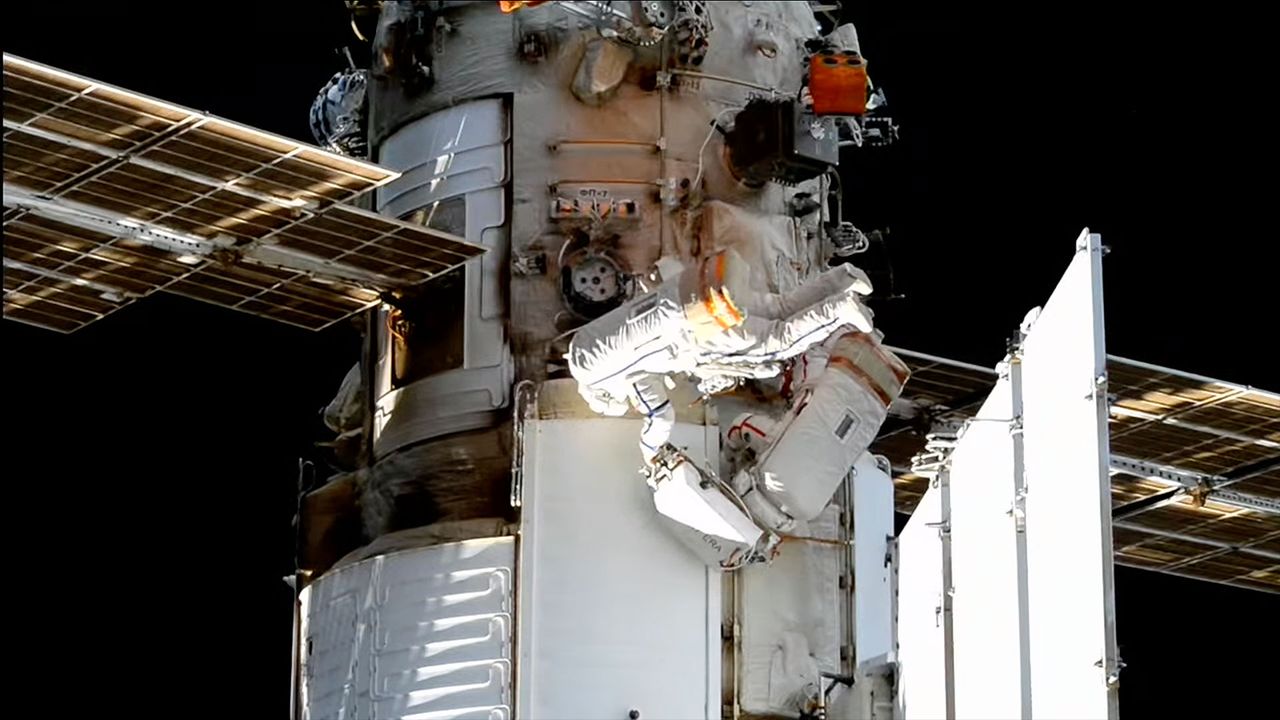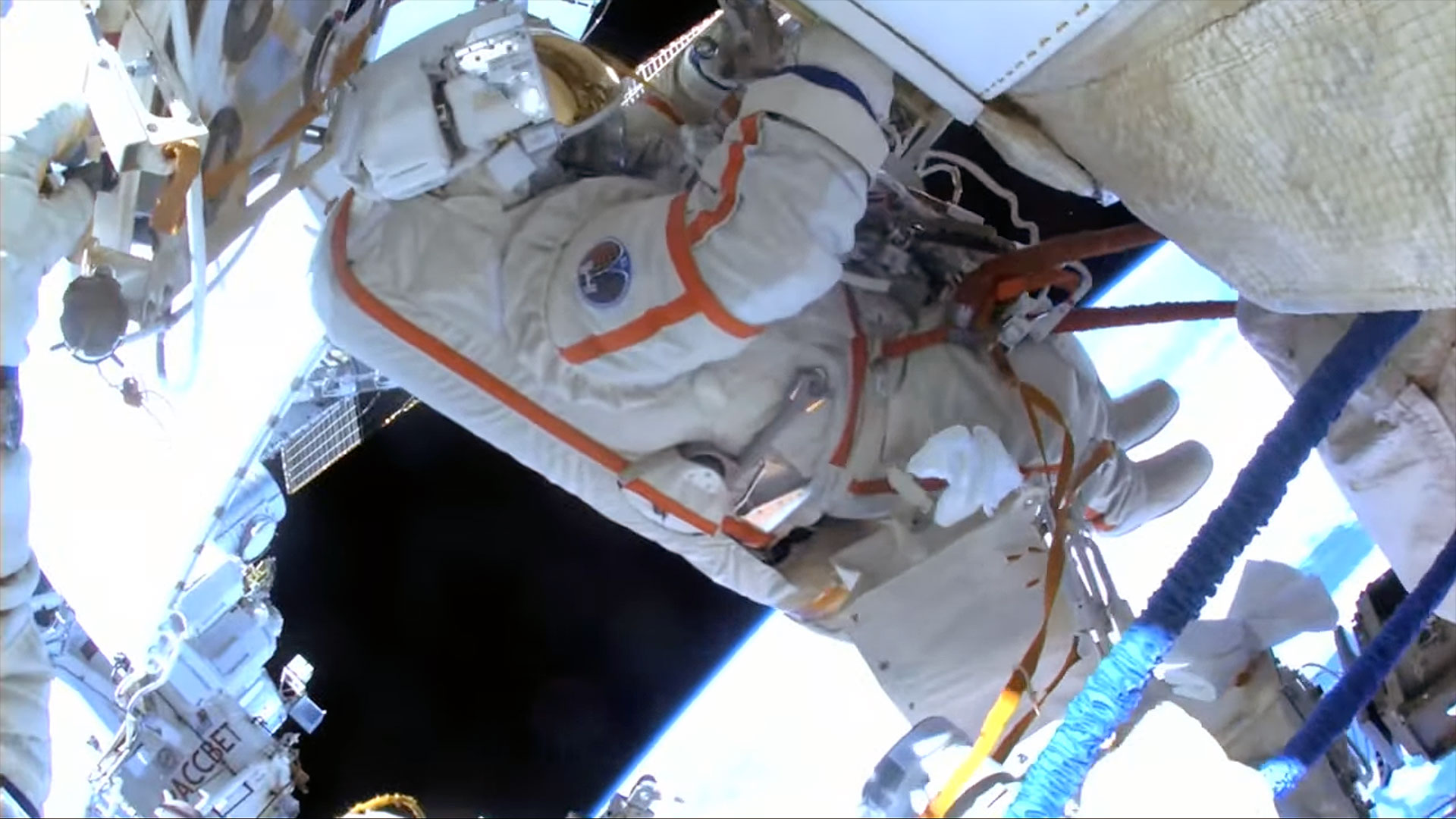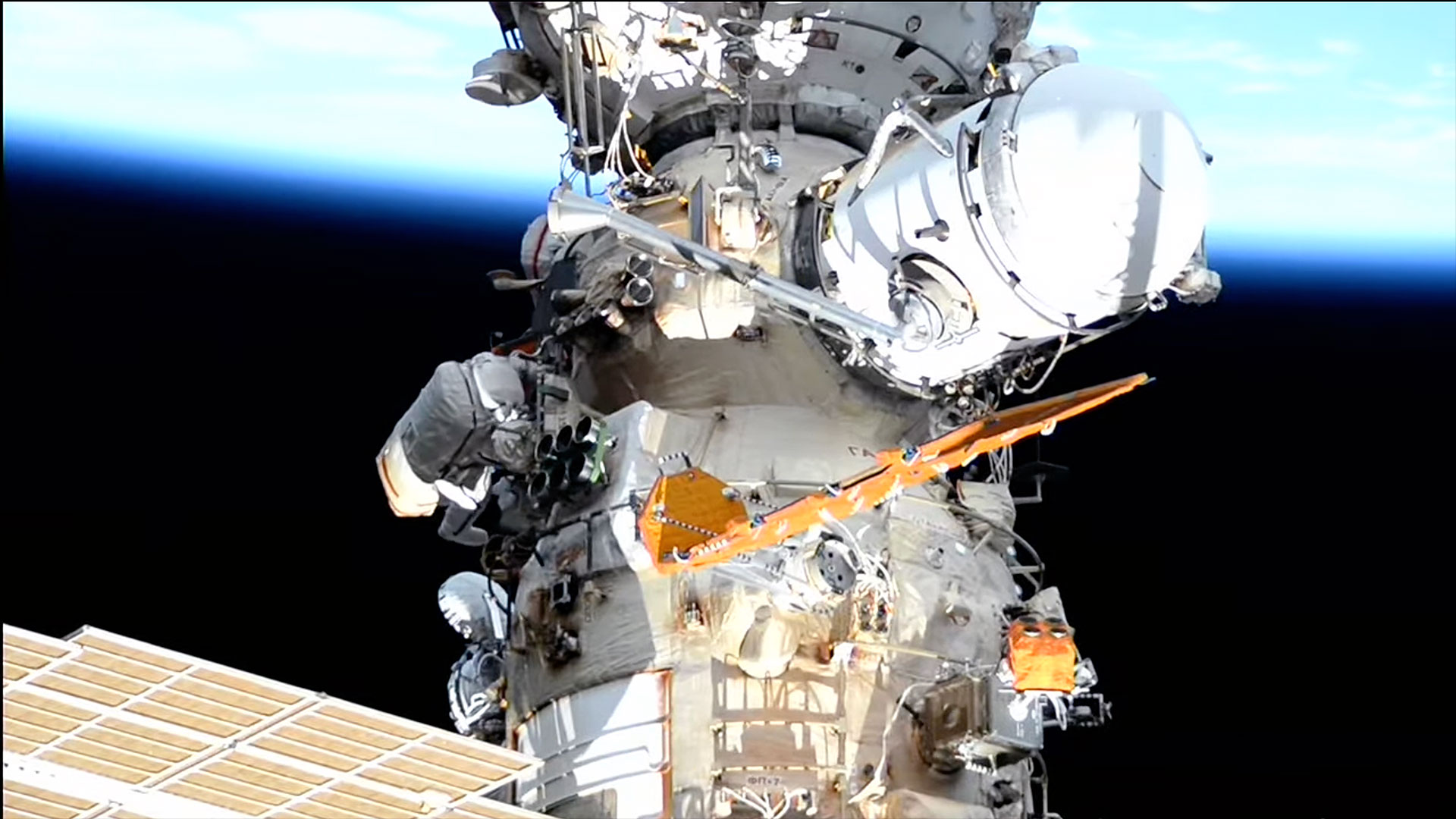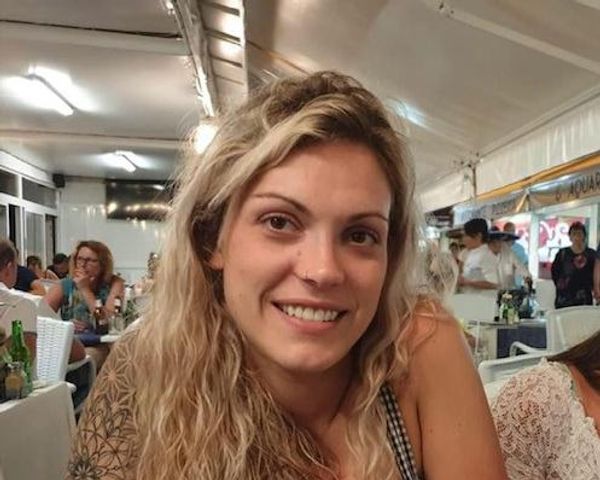
Two Russian cosmonauts completed their second spacewalk together, installing experiments and performing maintenance on the exterior of the International Space Station.
Expedition 73 commander Sergey Ryzhikov and flight engineer Alexey Zubritsky, both of the federal space corporation Roscosmos, were back in the vacuum of space on Tuesday (Oct. 28) to continue and expand on the work they began during an extravehicular activity (EVA) on Oct. 16. During this most recent outing, they spent 6 hours and 54 minutes mounting, relocating and cleaning hardware on the Nauka multipurpose laboratory module (MLM).
This EVA, like the one two weeks ago, began with Ryzhikov and Zubritsky opening the hatch on the Poisk Mini-Research Module-2, this time at 10:18 a.m. EDT (1418 GMT). After gathering their tools, the cosmonauts used a telescoping crane, called the Strela boom, to trasverse to their first worksite on the Nauka MLM.

There they tackled their first major task of the day, attaching a two-part apparatus to support a pulse plasma (Impuls) experiment and research into the effect that spacecraft have on Earth's ionosphere (IPI-500, by the NPO IT company in Moscow). The Impuls study will test the potential for jet engines to work in space.
Between running connectors and moving on to the next installation, Ryzhikov also cleaned a window on the Nauka module. Shutters that protect the pane when it's not in use were opened to allow the cleaning. When done, the shutters were closed again.
Ryzhikov and Zubritsky then returned to an experiment they installed during the earlier spacewalk two weeks ago. Ekran-M, or the Molecular Beam Epitaxy experiment, is designed to produce very thin materials for use in semiconductors. After discovering a loose gasket in the device's chamber, Ryzhikov and Zubritsky were instructed by mission control to carefully extract it using tweezers.
The spacewalkers then inserted a replacement cassette into the Ekran-M and, despite having to use wire ties to hold it in place, mission control reported getting good data. The older cassette will be returned to Earth for analysis.
Ryzhikov and Zubritsky wrapped up their time outside by relocating an exterior control panel for the European Robotic Arm (ERA), a manipulator that is used to access and service different areas of the Russian segment of the space station.

Russian EVAs often save for their final task the jettison of no-longer-needed equipment that has been gathered during the cosmonauts' work. With the pending arrival, however, of Japan's new robotic cargo vehicle, the HTV-X, on Wednesday morning (Oct. 29), it was decided to avoid any risk from the debris.
The spacewalk ended at 5:12 p.m. EDT (2112 GMT) with Ryzhikov and Zubritsky safely back inside the Poisk airlock.
Tuesday's EVA was the third for Expedition 73 and the 277th in support of the International Space Station's assembly and maintenance since 1998. It was Zubritsky's second spacewalk, bringing his total time outside to 13 hours and 3 minutes, and the third for Ryzhikov, who now has logged a total of 19 hours and 51 minutes in the vacuum of space.







